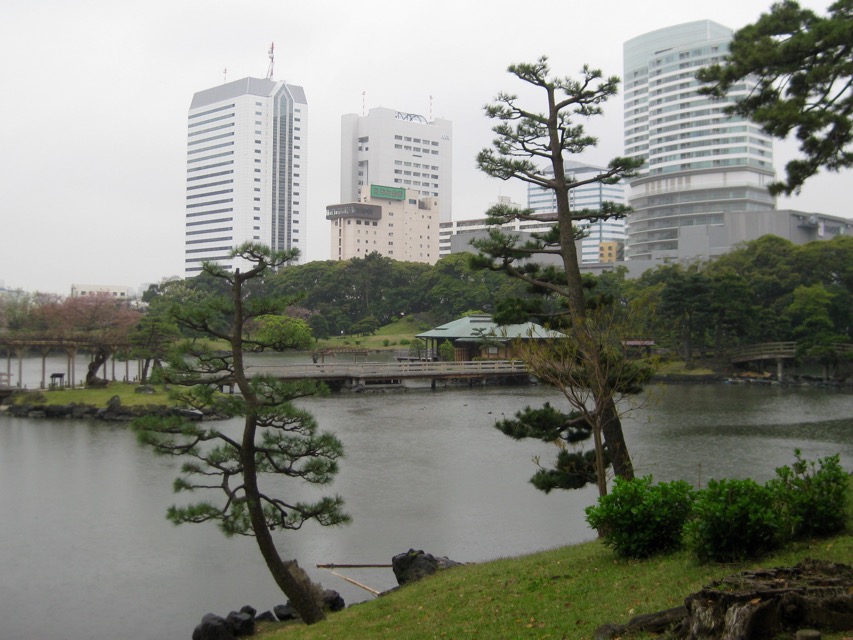There are several design items which seem to be required in Japanese gardens. First and foremost is water. Every garden I saw had some kind of water feature and most had a large pond. Water is chanelled around the garden from the pond to various smaller features such as streams, waterfalls, and often you will see small concrete channels for the water. Ponds and streams require bridges. These come in all shapes and sizes. In most gardens each bridge is uniquely styled. Often there are zigzag walkways in a bridge. Rocks also play an important part, often as stepping stones in water or on land, sometimes as steps. And most gardens have a hill or mountain of some kind. These look artificial and are basically mounds with a walkway up to the top, which commands good views of the garden.

Here you see water, bridges, islands, rocks, pruned trees, a tea house and a hill in the distance
Hama-rikyu is a typical daimyo garden in that it features a central pond, Shioiri-no-ike. There are also the duck hunting ponds and the moat.
There are also several bridges (bashi): O-tsutai-bashi, Nakajima-bashi and Umite-o-tetsutai-bashi are the main ones. all of which span the Shioiri-no-ike.
And there are several hills (yama): Mt. Fujimi, Mt. Ochin, Mt. Hakkei and Shin Hinokuchi. I failed to notice Mt. Hakkei and Shin Hinokuchi, which the brochure describes as “a hill near the lock gate facing Tokyo Bay, from where a view of the new Tokyo waterfront subcenter can be seen.”
Additionally, many public gardens now feature tea houses which sell green tea and Japanese sweets. There were two tea houses in Hama-rikyu. Not being a tea drinker, I did not visit a tea house.